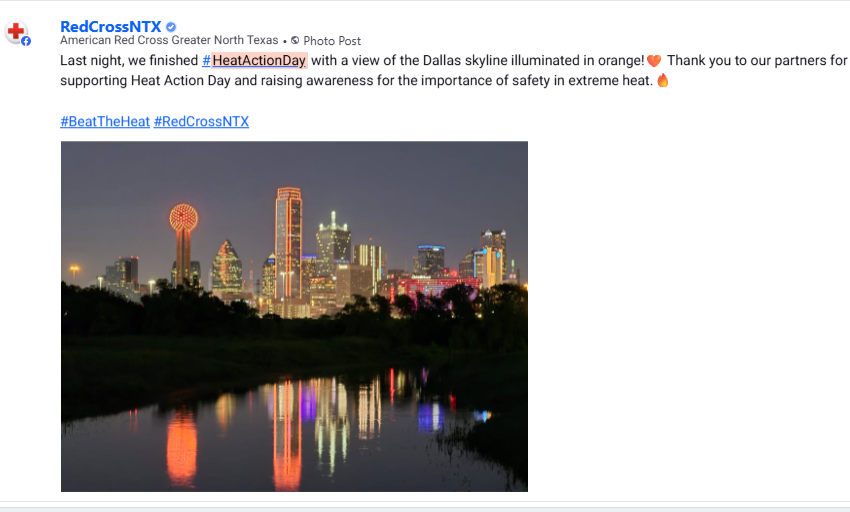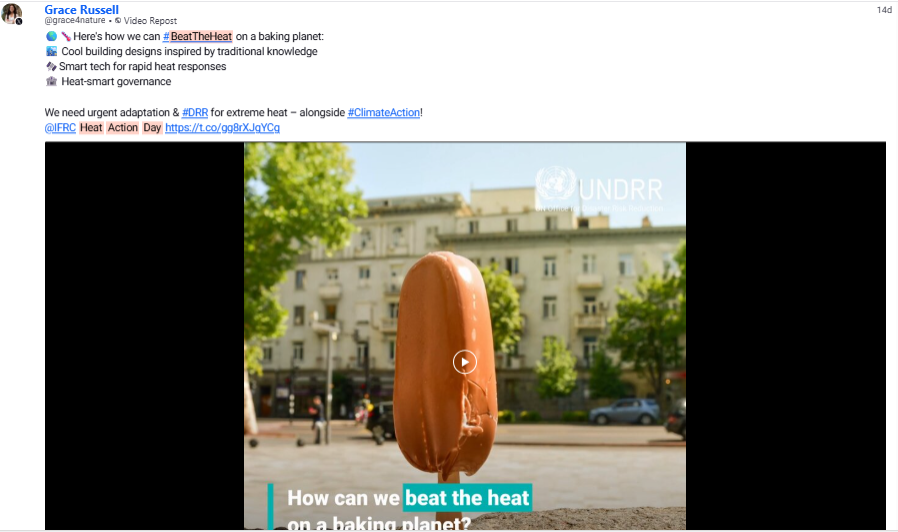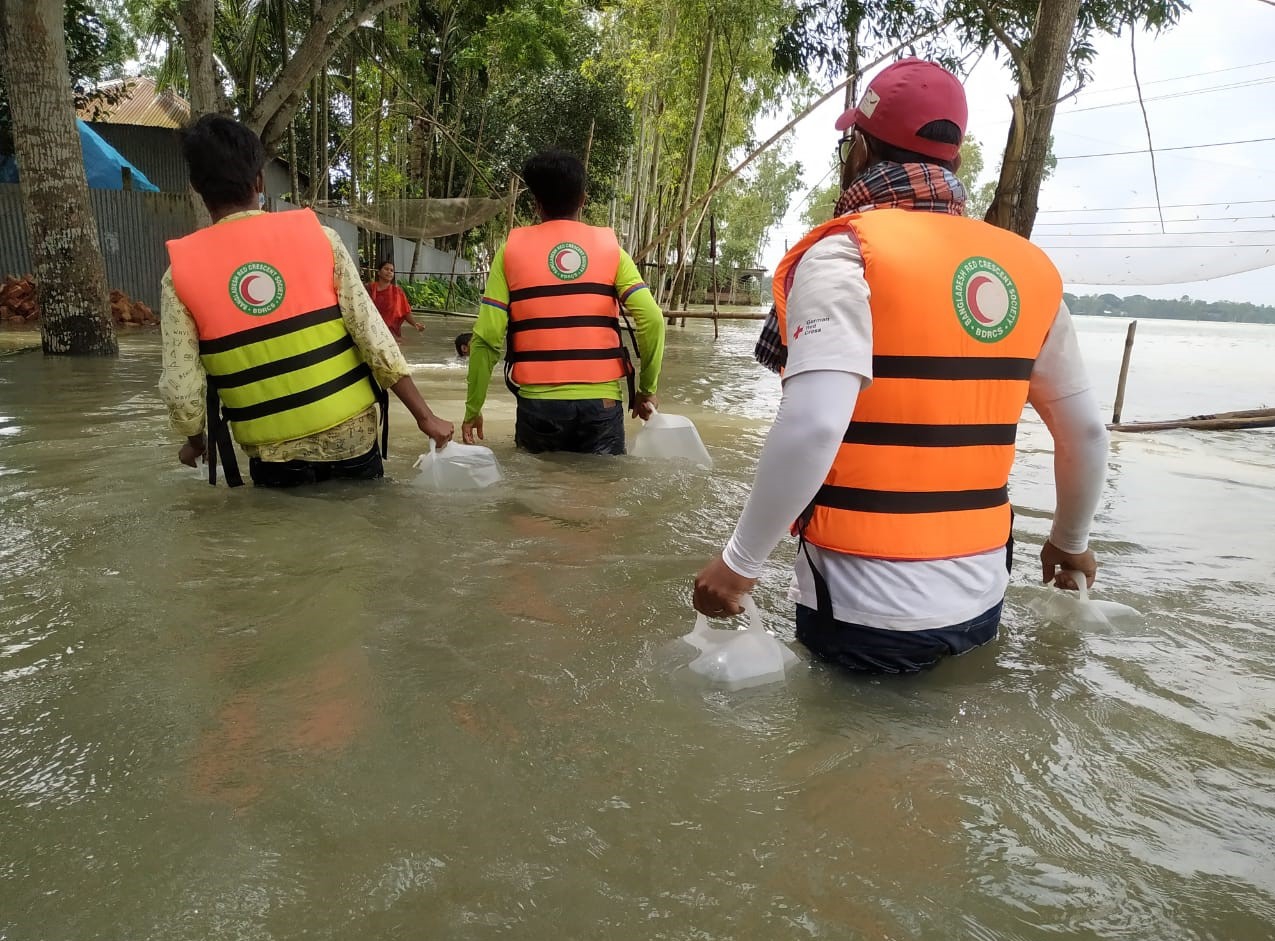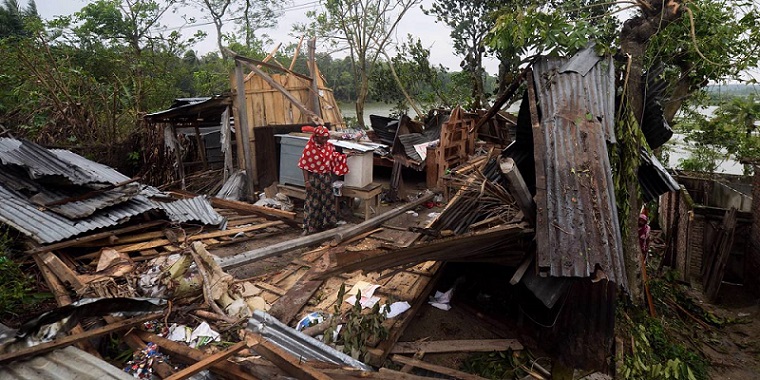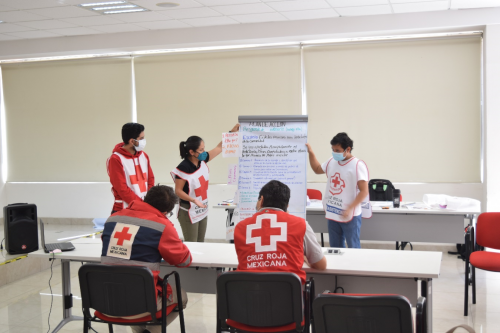Heat Action Day 2025 – Activities to #BeatTheHeat all around the World
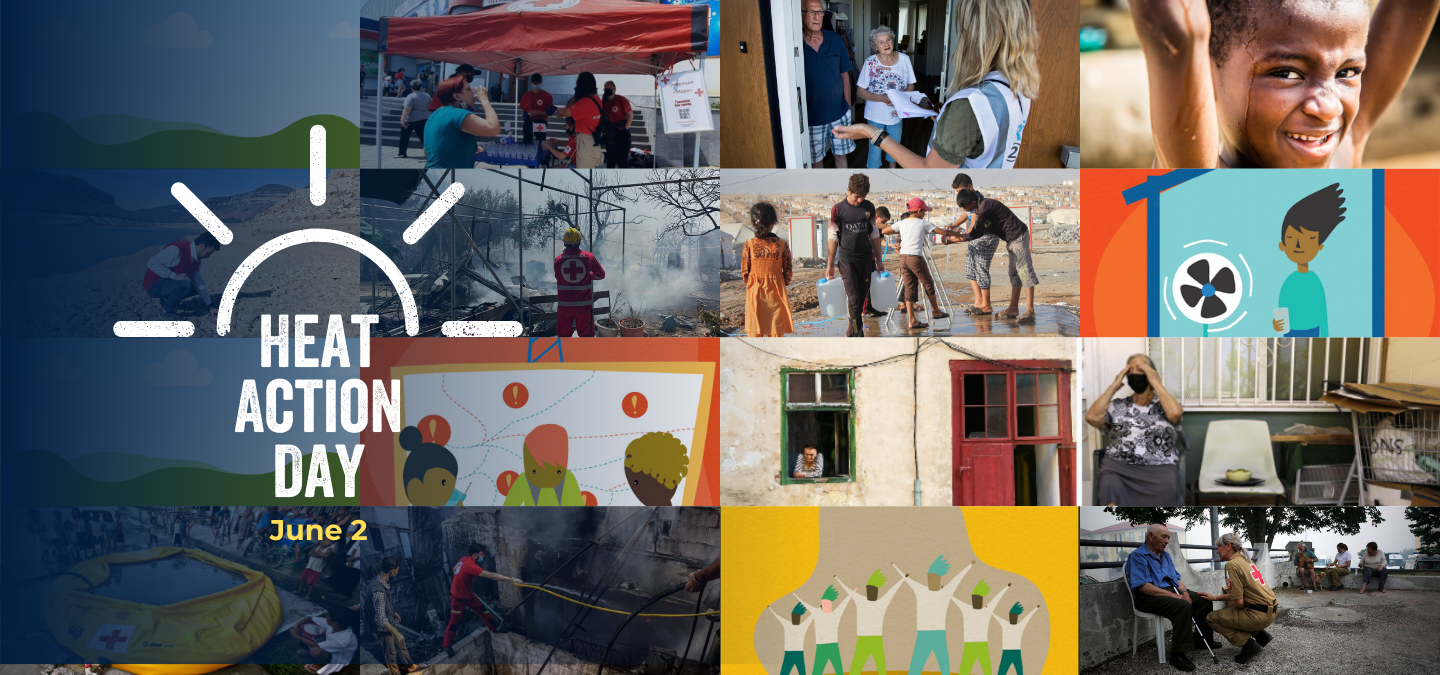
On Monday, June 2, 2025, we celebrated the 4th edition of Heat Action Day (HAD). As the impact of Heat Action Day spreads, our influence is a joy to quantify, with over 250 partner organizations and Red Cross Red Crescent National Societies taking part by organizing a multitude of activities in over 300 locations on around the globe, including regional heat webinars and seminars, art contests, heat runs, workshops, events focused on children, women and the elderly, distributions, cooling stations, and social media campaigns among other creative ideas. These events especially focused on the theme of HAD 2025 — “how to recognize heat exhaustion and heat stroke” in public spaces around the world to raise awareness of heat risks and share simple ways to #BeatTheHeat.
Besides the strong, experienced and insightful Red Cross and Red Crescent National Societies, this year we were thrilled to welcome retraining and new partners: Asian Development Bank, EU Covenant of Mayors, Global Heat Health Information Network, HHIN, Global Cities Hub, Global First Aid Reference Center, ICLEI, Resilient Cities Network, UNICEF, UNDRR, World Weather Attribution, along with founding organizations the American Red Cross, its Global Disaster Preparedness Center, the IFRC and its Climate Center.
Heat Action Day was also commemorated by the flagship report ‘Heat through the eyes of the most vulnerable: perceptions and pathways to action’, released by IFRC. The report highlights how mounting global temperatures are making heatwaves more frequent and intense — in a sense, “super-charging” them.
Summary of selected activities
Global
- ICLEI – Local Governments for Sustainability shared our Heat Action Day materials and messaging among their network of 2,500 local and regional governments committed to sustainable urban development
- Climate Central, World Weather Attribution (WWA) and the Red Cross Red Crescent Climate Centre published a report on the last 12 months of climate change-driven heat, and organized a press conference at the UN Palais and a webinar that was attended by 82 influential participants. Another report released by the Climate Central and World Weather Attribution, has found that in the past year, about half the world’s entire population experienced at least 30 additional days of extreme heat, largely due to climate change. “All 67 major heat events in the past year were made more likely by climate change,“ the WWA team say.
- UNDRR Global Platform: The UNDRR GP held a special event on Extreme Heat risk governance at which IFRC SG Jagan Chapagain was a featured speaker
- Tommaso Della Longa, Spokesperson and head of the Media and Crisis Communications team at International Federation of Red Cross and Red Crescent Societies (IFRC), made an address to the UN Palais on Heat Action Day
- The IFRC’s Flagship report is linked here: Heat: Through the eyes of the most vulnerable-Perceptions and pathways to action
- Extreme heat was highlighted during the launch of the new partnership of the Rockefeller Foundation, Wellness Foundation with the WHO–WMO Climate and Health Joint Programme,
- The IFRC Solferino Academy just announced the winners of the Ready in 60 video competition. This is a competition that Solferino Academy ran in partnership with the Global Disaster Preparedness Center (GDPC), with support from Meta, TikTok and many communications friends around the world. They asked the International Federation of Red Cross and Red Crescent Societies – IFRC network and beyond to come up with cool short 60-second videos that provide reliable information on how to prepare for disasters. The Hazard Prize category includes heatwaves and wildfires. Be sure to check out the winning preparedness short videos to learn how you can prepare for hazards in sixty seconds.
- 🔥 Hazard Prizes (Wildfire): Mohamed Tharwat and team from Greece
- ☀️ Hazard Prizes (Heatwave): Janeeta Ahmad Awan and team from Pakistan, Mary Debyleen Eterno and team from the Philippines
Africa Region
- In Burkina Faso, since April 29, 2025, more than 160 volunteers from the Burkinabe Red Cross have been raising awareness about the impacts of heat and protective measures. This awareness campaign was aimed at people at risk from the effects of the heat wave. It was carried out through home visits and visits to sites where high-risk activities take place.
- A weekly heatwave bulletin issued by ANACIM, Senegal’s National Meteorological Service, in collaboration with Senegal Red Cross, the Ministry of Health, and the National Vulnerability Assessment Service (CSE) was shared widely. This was part of their joint efforts to strengthen early warning systems and heat risk prevention.
- In Sierra Leone, the Sierra Leone Red Cross Society integrated the #BeatTheHeat mantra in its Disaster Response training organized for volunteers in the eastern town of Kono. The training attracted 30 volunteers from five local branches. Volunteers were taught about extreme weather events which is causing increasing heat strokes affecting people mainly children, women, and the elderly. Some of the preventive measures recommended included: Tree Planting and Care, Green skilling activities, media sensitization among others.
- Uganda Red Cross Society created heatwave awareness encouraging people to carry an umbrella to protect their skin and body from the heat.
Americas Region
- In the framework of the #HeatActionDay, the Colombian Red Cross developed a hybrid discussion that aimed to generate a space for technical and prospective dialogue to contrast approaches, concepts and monitoring dynamics related to extreme temperatures and heat waves, their understanding in the Colombian context, their monitoring systems and the impacts that these phenomena can have on water resources and on the health of the population. The speakers were: Head of the Office of Forecasts and Alerts of the National Institute of Hydrology, Meteorology and Environmental Studies (IDEAM). Physician and public health professional of the IFRC, and the Coordinator of the UNESCO Chair in Integrated Water Resources Management of the Universidad Piloto de Colombia.
- By building their 2025 Dallas (Texas, USA) CASA Playhouse in the Streamline Moderne style, Highland Park High School MAPS Environmental Architecture students explored how historical architecture offers insights into modern climate challenges. The project became a hands-on experiment in passive cooling, sustainable design, and architectural adaptation to extreme heat—perfectly aligned with the goals of Heat Action Day.
- Also, the American Red Cross North Texas Chapter hosted a chalk art drawing day at a local park; organized a press conference with local media featuring the fire chief and police chief as well as the deputy Mayor; lit up the entire downtown Dallas skyline orange; gave a customised Red Cross Ready presentation; created and publicized videos to educate about heat exhaustion versus heat stroke; produced HAD t-shirts; and mobilized youth and volunteer involvement in schools.
Asia Pacific Region
- Bangladesh Red Crescent created awareness sessions for school students about heat risks and safety; distributed essential kits among local communities, leaflets to raise public awareness and oral saline among pedestrians during extreme heat
- The India Red Cross organized activities in all branches around the country, including distribution of drinking water with ORS, distribution of Heat Wave awareness leaflets, and an Awareness Campaign for the general public including target beneficiaries such as pedestrians, police personnel, vehicle drivers. Also in India, the Mahila Housing Trust shared recent media coverage on the Heat Safety Campaign being carried out in Patna and Gaya by Mahila Housing Trust (WHT) in collaboration with JEEViKA, including messaging on how climate change is hitting the urban poor the hardest — with rising heatwaves, longer summers & erratic rainfall putting lives and livelihoods at serious risk. Women vendors, rickshaw pullers & daily wage workers are the most affected. Campaign Highlights (May–June)–Community sessions on dehydration, head cover & heatstroke symptoms; Awareness wall paintings in slum areas; IVR calls & WhatsApp tips for families. Co-developed by Municipal Council Churu, Mahila Housing Trust and NRDC India, the first-ever Churu Heat Action Plan was launched, bringing science, data, and community wisdom together to build a climate-resilient Churu.
- Nepal Red Cross organized a Drawing Competition at Sainamaina Municipality, Rupabdehi, Nepal, and hosted coordination meetings with media and various community events
- The Pakistan Red Crescent marked Heat Action Day 2025 with a series of impactful awareness sessions across major educational institutions in Peshawar including University of Peshawar, University of Engineering and Technology Peshawar, Khyber Medical College and Kings Hall Public School, Peshawar, in which volunteers engaged hundreds of students and faculty members, sharing life-saving information about the dangers of extreme heat, how to recognize early signs of heat exhaustion and heatstroke, and what actions to take. IEC materials with key messages were distributed to raise awareness and promote protective behaviors.
- In Thailand, the Asian Development Bank (ADB) focused on Strengthening Women’s Resilience to Heat Stress in Asia and the Pacific, aiming to ensure that gender equality is front and center in the global response to extreme heat. The suite of resources includes an Interactive Microsite featuring stories, data, and visuals on how extreme heat is affecting women across the region— and the gender-responsive solutions being tested today; a Heat and Gender Infographic, serving as a concise, visual overview of why extreme heat disproportionately affects women and how tailored interventions can reduce risks; and Short Films and Speaker Reels grounded in real-world perspectives from women in heat-affected communities.
Europe region
- The Municipality of Rotterdam, the Netherlands, proposed many very creative ideas all around the country, including: interviewing local experts on heat exhaustion and heat stroke, lighting the Erasmus bridge orange; organizing activities on rooftops at the festival “Rotterdam Rooftops”; and holding a HeatRun for 500 runners to make them aware of self-care during the heat
- The Red Crescent Society of Kyrgyzstan organized a wide range of public outreach, educational, and preventative activities in honor of Heat Action Day 2025 targeting urban populations, vulnerable groups, and caregivers across the country to promote awareness and safe behavior during extreme heat. Some examples include: Public Awareness Sessions in Urban Spaces–RCSK teams held informational sessions in parks and central squares across seven major cities of Kyrgyzstan providing practical guidance on recognizing symptoms of heat-related illnesses and basic steps for immediate first aid in the case of heatstroke or dehydration; First Aid Masterclasses to equip communities with life-saving skills during heat emergencies to help participants understand how to act quickly and effectively during heat-related health incidents; and Child-centered Interactive Activities with cartoon heroes and animators
- The Canton of Geneva, Switzerland set up air conditioned spaces/cooling centers in museums, libraries, shopping centers, retirement homes etc. during heatwaves for the public. The city also set up new cool bus stands with zero emissions and green roofs. The Global Cities Hub hosted and insightful event co-organized by the Red Cross Climate Centre focusing on how to beat the heat and increase climate resilience in cities, featuring top-level speakers from the Red Cross Red Crescent Climate Centre, the Chief Heat Officer of Athens, Greece, and the Climate Resilience for all (on Women’s Climate Shock Insurance Initiative). Finally, the Canton of Geneva lit the iconic Jet d’eau fountain orange.
- The Türkiye Kizilay marked the occasion of Heat Action Day with an array of creative activities all over the country, including: Water distribution in various schools to raise awareness about fluid loss caused by extreme heat; a first aid training session on how to respond to heat emergencies for adults, with “Heat Action Day” caps distributed; for children, a drawing activity themed around Heat Action Day with printed t-shirts, a drawing activity, and a “true or false” game (wrong answers were responded to by popping balloons filled with orange confetti); at the epicenter of the Pazarcık Earthquake, a t-shirt handprint activity with children, and a first aid training session titled “First Aid at Heat Related Emergencies” for adults; an LED Screen Display featuring the hashtag #BeatTheHeat, focused on heat exhaustion and heatstroke, displayed on a 140-square-meter LED screen located in the Kızılay Shopping Mall; an Internal and Social Media Broadcast on heat exhaustion and heatstroke delivered on camera by their General Director of Disaster Management and Climate Change and disseminated via their internal communication channels and social media accounts; and all Volunteer Centers actively participated. Additionally, with the support of their Volunteer Leader Teachers, various Heat Action Day-themed games and activities were simultaneously organized in many schools across Türkiye; the Psychosocial Support (PSS) and health teams at the Adıyaman Community Service Center organized an awareness activity at Paşamezrası Village Primary School with the participation of parents and students, including a video screening and a true/false information game; and beneficiaries from the Child-Friendly Space and the Red Crescent Women’s Library of Nurdağı Service Unit gathered in the common area next to the library for a handprint activity on T-shirts for children.
MENA region
- The Bahrain Red Crescent Society organized a field awareness visit targeting workers at various job sites. The aim was to raise awareness about the risks of heat stress and sunstroke, especially during the summer months when temperatures rise significantly. The visit included offering each worker a small gift along with a healthy light meal. Volunteers also provided direct explanations about key preventive measures to avoid the effects of extreme heat, such as drinking plenty of water, taking regular breaks in shaded areas, and wearing light-colored, breathable clothing, while emphasizing the importance of health and workplace safety. It is worth noting that, in the Kingdom of Bahrain, labor law prohibits outdoor work under direct sunlight between 12:00 PM and 4:00 PM during the months of July and August, in order to protect workers from high heat exposure.
- The Egyptian Red Crescent through the STREAM project, organized an awareness session for the community of El Shoqr Village in Beni Suef Governorate, to raise awareness about the risks and impacts of extreme heat waves, while also providing practical guidance on essential first aid measures for responding to heat-related emergencies. Building on these efforts, they are also conducting awareness sessions on heat waves for adults and children from migrant and refugee communities, in addition to an online session for ERC volunteers across Egypt. The aim of these sessions is to raise awareness of heat-related risks while promoting inclusion and integration by ensuring that all members of the community, regardless of background or status, are informed, prepared, and protected.
- The Iran Red Crescent Society implemented a series of educational, awareness-raising, and preventive activities across the country to mark Heat Action Day 2025 including: in-person Educational Workshops to increase public awareness on the prevention and early response to heat-related illnesses, especially heatstroke, targeting high-risk groups such as the elderly, children, women, and Red Crescent volunteers and responders; Child-focused Learning Programs offering tailored sessions organized for children using creative and age-appropriate methods such as drawing, storytelling, and interactive group activities to help them understand the risks of extreme heat and the importance of hydration and shade; and Needs-based Community Trainings which provide localized educational programs in rural and climate-vulnerable areas held in schools, mosques, community centers, and Red Crescent Houses, taking into account the socio-cultural and climatic content.
Sample of Cities which celebrated Heat Action Day with specific safety campaigns
- Dallas, Texas, USA: Celebrated with a citywide safety campaign, working with local Highland Park High School Moody Advanced Professional Studies Program Environmental Architecture class on building cool homes, and collaborating with the American Red Cross North Texas chapter and Dallas City Hall, Dallas Police and Fire Departments.
- Geneva, Switzerland: Lit the Jet d’Eau in orange as part of Heat Action Day activities
- Rotterdam, Netherlands: Lit the Erasmus Bridge in orange and sponsored heat runs, rooftop heat activities, seminars, etc.
- Worms, Germany: Activated its Heat Action Network, hosted expert forums, and held public workshops and trainings focused on heat protecti
Reflections from HAD Participants
- “The Heat Action Day awareness campaign successfully enhanced the knowledge and preparedness of 197 individuals from various groups (Adults and children from Egyptians, migrants and refugees). The completed analysis of participant feedback and assessment data confirms a significant increase in awareness regarding heatwave risks and appropriate responses.”
- “How volunteers from other countries like Pakistan participated on heat action day was wonderful.”
- “Soy muy importante para seguir realizando acciones por el incremento de calor a nivel local, nacional e internacional a todos nos afecta.”
- “Even simple knowledge-sharing about heat impacts and protection measures can significantly reduce health risks as heat is not still recognized as a major threat in many countries. “
- “Cities matter, when it comes to heat resilience”
- “Urgent Need for Preparedness: The increasing frequency and intensity of heatwaves underscore the importance of proactive planning and anticipatory action to reduce risks, especially for vulnerable communities. Community Awareness is Crucial: Public awareness campaigns and community engagement are vital. Many heat-related illnesses and deaths can be prevented with timely information and behavioral change. Inter-agency Coordination Matters: Effective collaboration among government bodies, NGOs, health departments, and disaster management authorities enhances the reach and impact of heat action plans. Localized Responses are More Effective: Heatwave responses must be tailored to the local context, taking into account cultural practices, infrastructure, and specific vulnerabilities (e.g., urban poor, outdoor workers, elderly).”
- “The event provided a valuable platform to observe and exchange a wide range of approaches to community awareness, early warning, and preparedness in the face of extreme heat.”
Sample of social media posts:
- https://x.com/jagan_chapagain/status/1929639444555919671
- https://x.com/jagan_chapagain/status/1929482630237675734
- https://www.instagram.com/p/DKZzY_oIP19/?utm_source=ig_web_copy_link&igsh=MzRlODBiNWFlZA==
- https://www.facebook.com/IFRC/posts/pfbid0oKph28kBcc6Zo5Rhtv1TkqhA9bnTvQMe28KoWEjB94jLBcjBXq4qGF2evikWyfXsl?__cft__[0]=AZWRzebYZxI0YbYXnFerc1j9Hf4csATM1QVUoms1O-R2EE7vAvQ2mY5IBeRPe1D9FeFyz7yljzsSWmgRJq4fCK0Yw7bg1nyUMh-eDRMBMb1aN2RolPgkUxZHv0ZvC7jS4HwEXZkArYKZIrGn3t2d_GVIEBbFuf9ghBCZuQwGRzB9x8oFXaNkxgzhR3AQqpFAw1WLNkmcMrOf8uksLy52GI8M&__tn__=%2CO%2CP-R
- https://www.linkedin.com/posts/ifrc_heat-action-day-activity-7335387203004465152-w5O_?utm_source=share&utm_medium=member_desktop&rcm=ACoAACInI8oBlUgha56XepCfYcgjRuaU-V2lrOE
- https://bsky.app/profile/ifrc.org/post/3lqn3nvnnks2e
- https://www.threads.com/@ifrc/post/DKZzagVIFq3?xmt=AQF0NRDb8NjQiFhMQoZ1lqfyPnCsj7TwLBhmKqSaTFzriQ
Check out this page to learn more about Heat Action Day and explore activities from previous years. We look forward to collaborating again next year for Heat Action Day and staying connected until then! #BeatTheHeat

